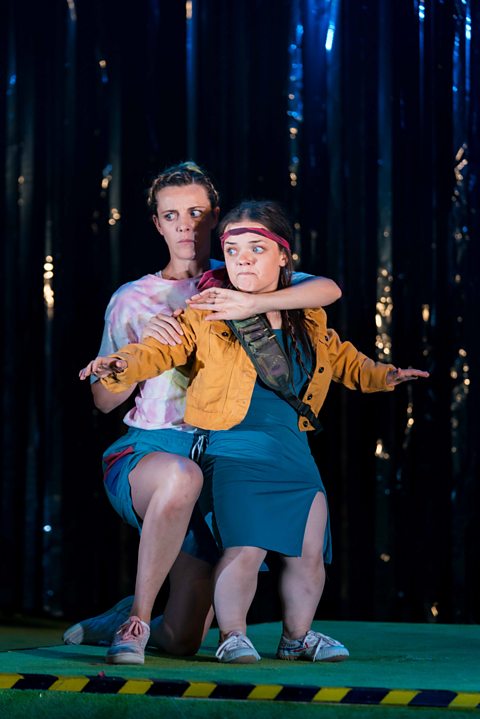Physical skills
As well as vocal skills, there are a range of physical skills and techniques for performers to utilise when performing.
The range and clarity of a performerÔÇÖs facial expressions are dependent on the style of the drama. Eye contact can be a powerful tool for creating a connection between characters or with an audience. What happens when eye contact is used between characters and how long it is held for varies, and eye contact with individual audience members will have an entirely different effect. Try experimenting with both in the mirror or by working in pairs to give constructive feedback to each other.
When thinking more of the body, rather than the face, it is important to consider a performerÔÇÖs use of:
- posture - the physical alignment of a performerÔÇÖs body
- mannerisms - small, repeated movements specific to a character
- gait - how a character walks
- movement - several different drama techniques focus on controlled movement, eg ensemble or mime
All of these can convey information about the character being played.

Quick change
In rehearsals, the quick change exercise can help performers to change into other characters, using different physical skills. A character is called out, with stock characterA classic and two-dimensional character, often seen as a clich├ę, eg an evil villain or a noble hero. working best, and a performer has to change into role quickly without using words to communicate character.
Bigger and bigger
When performing, the command ÔÇśBiggerÔÇÖ is called and performers should exaggerate their physicality. This exercise helps encourage performers to use all elements of their body to communicate character. ÔÇśSmaller and smallerÔÇÖ can also be used to experiment with more subtle physical traits.
Multi-roling
When multi-rolingWhen a performer plays more than one character., it is important to be able to switch between the different physical skills quickly. Performers need to think about who their character is and how they feel, particularly in moments where they might be uncomfortable or worried, to be able to make use of appropriate physical techniques. All techniques require definite, precise and controlled movements. Filming movements and watching them back can help performers ensure that their movements are synchronisedWhen actions are in time, usually with other people. and fluid movementFlowing from one move to another seamlessly. .
Gestic acting
Clear gestures or movements define a characterÔÇÖs attitude and situation within a performance. gestic actingA clear gesture or movement that defines a characterÔÇÖs attitude and situation within the play, most associated with Brecht and Epic theatre., also known as gestus, is most associated with the practitioner Bertolt BrechtA German theatre practitioner associated with Epic theatre. and Epic theatre. It is important to consider what a characterÔÇÖs role is within a performance and how a performer can portray this using gestus.
More guides on this topic
- Responding to a stimulus - OCR
- Developing an idea - OCR
- Selecting a genre or performance style - OCR
- Selecting a practitioner - OCR
- Rehearsing for a performance - OCR
- Refining a performance - OCR
- Designing for productions - OCR
- Health and safety considerations - OCR
- Creating a portfolio or devising log - OCR